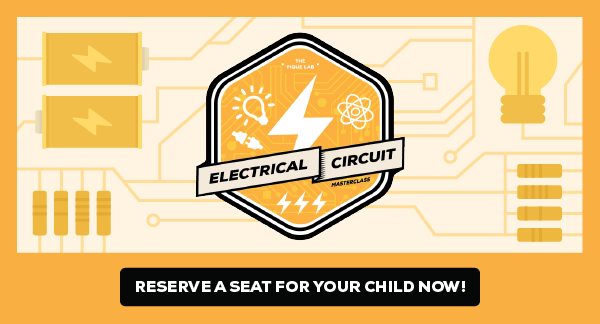Do you enjoy taking a ride in bumper cars?
For those of you who frequently ride bumper cars, have you realised that at the back of all bumper cars, there is always a wire extended all the way to the ceiling?
Or are you always too busy bumping into others and have never taken notice of the wire?

Read Also:
For those of you who have seen the wire, have you ever wondered about its purpose in bumper cars?
To answer this question, I will be discussing a question on Electricity from the 2014 Yew Tee Primary School P6 SA2 Examination Paper, where we can gain deeper insights into how the components of the bumper car allow it to work!
Let’s Take A Look At This Question

Source: Yew Tew Primary School – 2014 P6 SA2 Examination Paper [Q40]
Let’s Analyse Part (A)
“Explain what will happen if the metal wheel is replaced with a rubber wheel.”
Before we start, we must first understand how bumper cars work.
Bumper cars move with the help of a motor, which is powered by electricity. Without electric current flowing through the motor, the bumper car is unable to move.
In order for electric current to flow through the motor, there must be a closed circuit with the motor.
What are the other components in the electrical circuit other than the power supply, motor, metal pedal and rod?
We can see that there is a metal floor, metal wheels, metal wire mesh, and a pick up wire (which is made of metal). Do you realise that all these components are made of metal?
“What is the most important property of metal in the topic of Electricity?”
Metal is a conductor of electricity and allows electric current to pass through it.
When the person steps on the metal pedal, the metal pedal comes into contact with the metal rod, which are conductors of electricity.
This creates a closed circuit with the bumper car. Electric current can flow through the bumper car, allowing the bumper car to move.

“What is the difference in property between rubber and metal in the topic of Electricity?”
Unlike metals, rubber is an insulator of electricity and does not allow electric current to pass through it. This creates an open circuit with the bumper car.
When asked to explain why is there a closed/open circuit for Electricity questions, I will remind my students to use the 4-step template structure below to avoid missing links in their explanations:
4-Step Template Structure For Electricity Questions
Step 1: State the situation.
Step 2: Identify if there is an open/closed circuit.
Step 3: Determine if electric current can/cannot flow.
Step 4: State the outcome.
Try applying the four steps above and see if you manage to get the same answer as me!
Suggested Answer For Part (A)

The bumper car will not move.
Step 1: When the metal wheel is replaced with a rubber wheel, which is an insulator of electricity,
Step 2: there would be an open circuit with the bumper car.
Step 3: Electric current cannot flow through the bumper car,
Step 4: preventing the bumper car from moving.
Let’s Analyse Part (B)

“Based on the above information, if another bumper car was added to the metal floor, would the speed of the bumper cars increase, decrease or remain the same?”
When we take a look at the table above, what can we observe about the simple circuit (green)?
We can see that there is only 1 battery supplying electric current to 1 bulb, where the bulb lights up with a brightness of 10 units.
Thus, we can conclude that the battery must have supplied 10 units of electric current to the bulb.

Next, what happens when we add one more bulb in series (purple)?
Since there is 1 battery supplying 10 units of electric current to the 2 bulbs in the same circuit, would the 2 bulbs have to “share” the 10 units of electric current equally?
Yes! Thus, each bulb would receive 5 units of electric current and light up with a brightness of 5 units.

However, what happens when we add another bulb in parallel (blue and red) instead?
The battery produces 10 units of electric current for each closed circuit. Since we can trace out 2 closed circuits (blue and red) when the bulbs are arranged in parallel, this means that there would be 10 units of electric current supplied to each closed circuit (blue and red).
As there is only 1 bulb in each closed circuit, would the bulb in each closed circuit have to “share” electric current?
No! Instead, each bulb in the blue and red circuit would receive all 10 units of electric current from the battery, causing each bulb to light up with the same brightness of 10 units.
Summary
When the bulb receives 5 units of electric current, the bulb lights up with a brightness of 5 units.
However, when the bulb receives 10 units of electric current, the bulb lights up with a brightness of 10 units.
What do you notice? The brightness of the bulb depends on the amount of electric current flowing through the bulb.
In the question, we need to find out how the speed of the bumper car will be affected when another bumper car is added.
From the table, when we add bulbs in series, the bulbs receive less electric current and light up less brightly.
However, when we add bulbs in parallel, the bulbs receive the same amount of electric current and light up with the same brightness.
Similarly, when we add another bumper car to the metal floor, we must first find out if the bumper car is added in series or in parallel so that we can determine how much electric current the bumper cars receive.

From the diagram above, there are 2 closed circuits we can trace out. This tells us that the bumper cars are arranged in parallel and would receive the same amount of electric current.
“What do you think will happen to the speed of the bumper cars when they receive the same amount of electric current as before?
The bumper cars would move at the same speed.
Suggested Answer For Part (B)
The speed of the bumper cars remains the same.
Conclusion
In this article, we have discussed how a bumper car works. I have also shared the 4 steps that we can take to answer questions on Electricity as well as how the presence of electrical conductors and insulators can affect an electrical circuit.
With the above steps, I hope that you now have more confidence in tackling application questions on Electricity.
💫 Fun Fact: There are 3 different types of bumper cars that are commonly used in the world:
- With wires and electrified ceilings (as discussed in the question).
- Without a wire connecting the bumper car to the ceiling.
- Battery-powered.
If you would like to find out more about the different types of bumper cars, please refer to the following link: https://www.youtube.com/watch?v=_qWmwtGZipw&t=193s
Stay tuned for more articles! 🙂

If you like our approach behind solving 'Electricity' questions, perhaps you may be interested to check out our upcoming Electrical Circuit Masterclass where we'll dive deep into several answering techniques and practice questions.
Click Here To Learn More About The Electrical Circuit Masterclass >>







